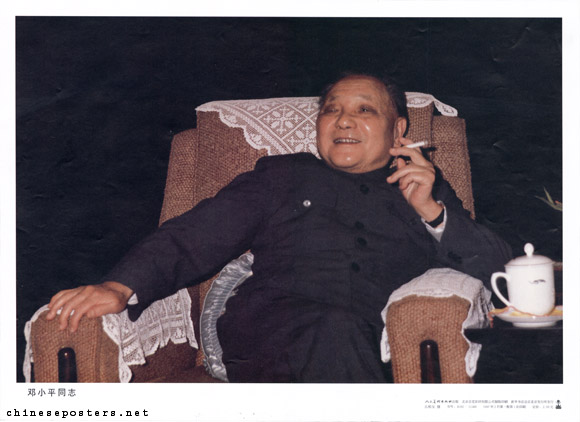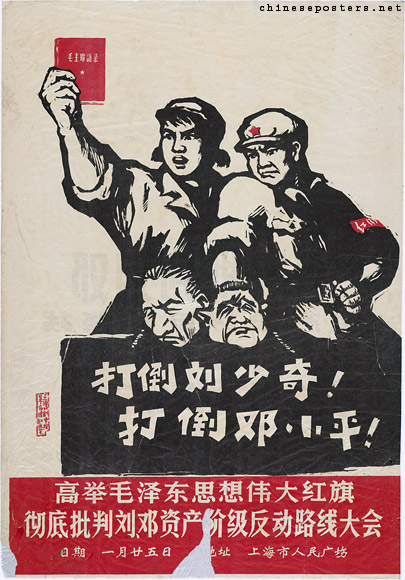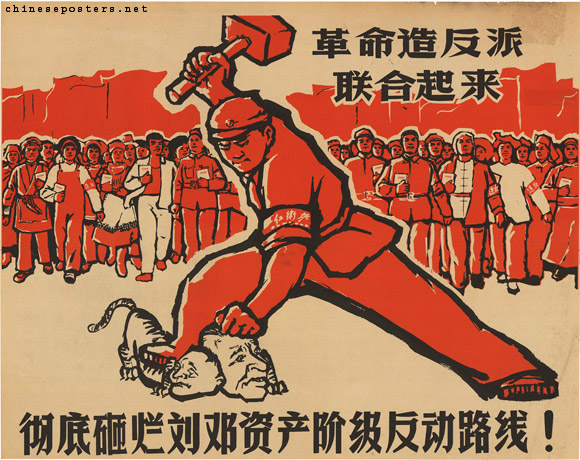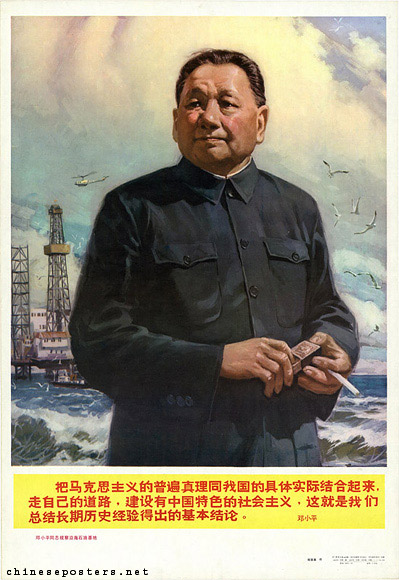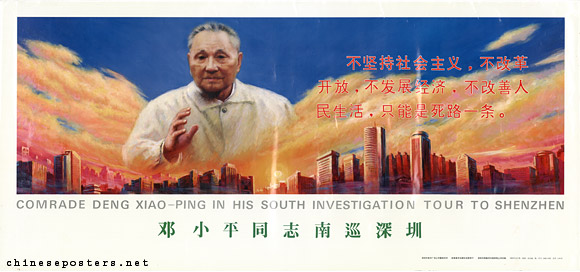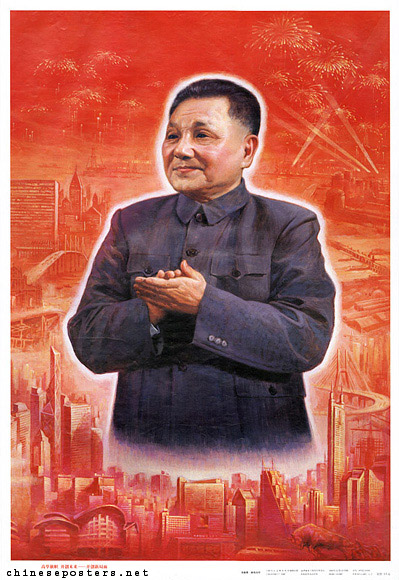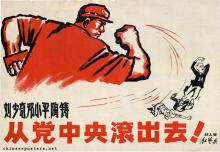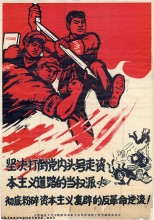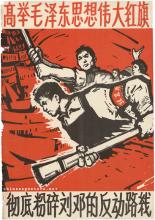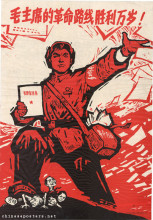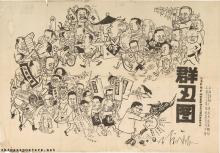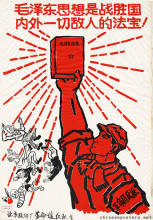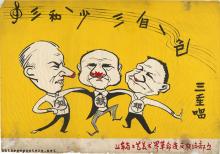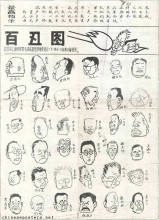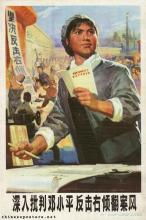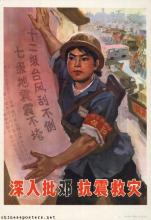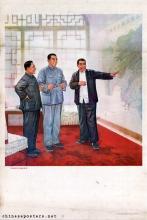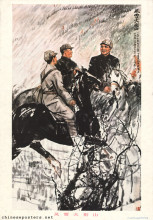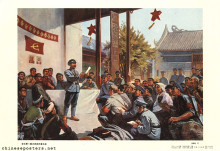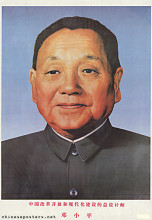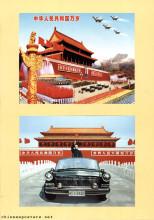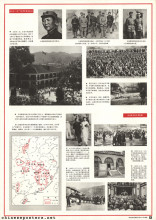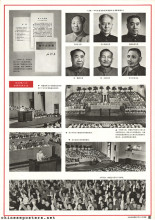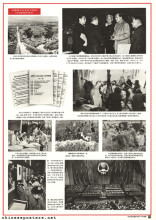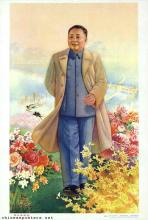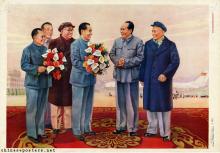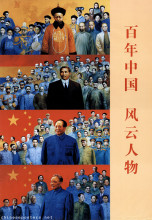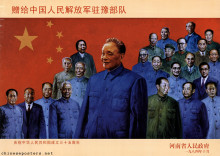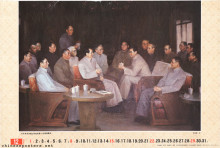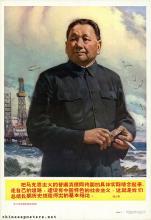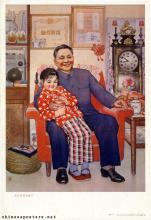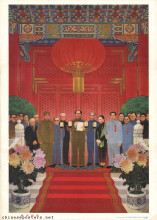Deng Xiaoping (邓小平, 1904-1997) was born as Deng Xiansheng into a landlord family in Guang’an District, Sichuan province. At the age of 15, Deng was sent by his father to a preparatory school in Chongqing. A year later, Deng left for France, where he participated in the work-study program for Chinese students. In 1922, Deng joined the China Socialist Youth League. Among his associates was Zhou Enlai. When the Communist Party called its members home in 1926, Deng stopped in Moscow for a few months of extra study.
In 1927, he changed his name to Xiaoping, meaning "small peace". After returning to China, he played a role in organizing the Red Army, the predecessor of the People’s Liberation Army (PLA). During the Long March, Deng was Secretary-General of the Central Committee. While acting as the political commissar of the Eight Route Army commanded by Liu Bocheng, he masterminded a number of important military campaigns during the war against Japan and during the Civil War against the Guomindang.
In 1928, Deng married his first wife Zhang Xihuan, who died two years later. After the Long March, in Yan’an, Deng met and married Pu Chiungying, who changed her name to Zhuo Lin. They had three daughters and two sons.
After the founding of the People’s Republic of China in 1949, Deng held a number of important military and civilian posts: Member of the General Staff of the PLA; Member of the Central Committee; Member of the Politburo; Secretary-General of the CCP; Vice-Premier of the State Council. However, Deng and Mao Zedong clashed when the Great Leap Forward (1957-1958) failed.
In 1966, Deng and Liu Shaoqi became the major targets of struggle during the Cultural Revolution. They and Mao basically disagreed on the course of development China ought to take. Mao, moreover, feared that Liu’s and Deng’s policies would tarnish his revolutionary status. Deng was prosecuted by Red Guards, lost all his positions and was sent into internal exile.
Completely smash the capitalist class and the reactionary line of Liu and Deng!, ca. 1967
In early 1973, Deng was rehabilitated at Mao’s suggestion and with strong support from Zhou Enlai. A year later, he re-entered the Politburo. Deng attempted to consolidate his power base but was not yet strong enough to oppose Mao’s wife, Jiang Qing and the Gang of Four. When Zhou died in January 1976, Deng delivered the memorial service eulogy. Three months later, the Gang of Four blamed Deng for instigating bloody riots in Tiananmen Square and during the campaign to criticize rightist deviation, he was purged for the second time.
Comrade Deng Xiaoping inspects a coastal oil base, 1985
Deng’s excellent connections in the Army, Party and State bureaucracy enabled him to resume work once the Cultural Revolution had ended. By 1977, these same connections enabled him to sideline Mao’s designated successor Hua Guofeng, and to nominate his own protegees, including Hu Yaobang and Zhao Ziyang, in key positions. Having thus secured his political base, he succeeded in having adopted his plans for the urgent modernization of the economy in December 1978. This strategy, the Four Modernizations (of agriculture, industry, national defense and science & technology) was based on a blueprint that he and Zhou Enlai had drawn up in the early 1970s. As a result, Deng is widely seen as the "Chief Architect" of the Chinese economic reforms.
Comrade Deng Xiaoping inspects the troops, 1988
In the political arena, Deng was active in neutralizing the harmful effects of Mao’s radical policies that had culminated in the Cultural Revolution. On the basis of Mao’s dictum "seek truth from facts" (实事求是) that Deng propagated, a new pragmatism could take root in Chinese politics. With the "One Country, Two Systems" (一国两制, Yiguo liangzhi) principle that he formulated, China was able to resume sovereignty over Hong Kong (1997) and Macao (1999). The same principle is also applied when reunification with Taiwan is proposed.
Comrade Deng Xiaoping in his South Investigation Tour to Shenzhen, 1992
Deng’s reputation was tarnished by his role in the 1989 crackdown. While blame for ordering the troops in was pinned on lower-ranking leaders, there seems little doubt it was Deng who gave the crucial order to shoot to kill. After the massacre, Deng retired from public life almost completely. In November 1992, Deng became dissatisfied with the slow and cautious pace of economic reform that was advocated by conservative leaders such as Li Peng and Yao Yilin. To show his displeasure, he followed the imperial tradition of making an inspection tour of the South, in this case of the most advanced and prosperous provinces and regions (nanxun, 南巡). From that moment on, China’s economic development exploded, leading to double-digit growth for much of the 1990s.
With Deng’s semi-retirement from public life after the Tiananmen Incident in 1989, the Propaganda Department finally saw an opportunity to build up a cult around the "Chief Architect" of reform. In 1992, a portrait of him, done in typical brushwork style, was released as a poster. This turned out to be the opening salvo of an avalanche of Deng-related materials in the years to follow.
We should do more, and engage in less empty talk, 1992
In the same year, posters appeared that featured Deng’s more remarkable remarks ("We should do more, and engage in less empty talk", amongst others), against a backdrop of either a photomontage of a modern city skyline, or flower arrangements reminiscent of the 1950s. In 1994, a complete set entitled "Beloved comrade Xiaoping", devoted to significant moments in his life, was published.
With Deng’s demise in February 1997, the market was flooded with "Deng posters". People did not simply buy the images; trinkets, memorabilia and outright kitsch, such as watches bearing Deng’s portrait, were also quite en vogue for a while. It seems as if Deng, with his health decreasing, had been less and less able to keep the Party propaganda machinery - and his successor Jiang Zemin - from using him as a propaganda object. Jiang has also been the moving force behind the canonization of Deng Xiaoping Theory.
The old man of the East’s Spring will be long, 1992
Hold high the banner, create the future - Create a new situation, 2001
Chen Yu (ed.), Zhonghua renmin gongheguo 36 junshijia [36 Strategists of the People’s Republic of China] (Shanghai: Shanghai wenyi chubanshe, 2002) [in Chinese]
Dachang Cong, When Heroes Pass Away - The Invention of a Chinese Communist Pantheon (Lanham MD, etc.: University Press of America, 1997)
Gao Xin and He Pin, Gaogan dang’an: Zhonggong quangui guanxi shidian [Dossiers of high cadres: A factual dictionary of the relations of influential officials of the Chinese Communist Party] (Taipei: Xin Xinwen Zhoukan, 1993) [in Chinese]
Guo Jian, Yongyi Song & Yuan Zhou, Historical Dictionary of the Chinese Cultural Revolution (Lanham, etc.: The Scarecrow Press, Inc., 2006)
Nora Wang, "Deng Xiaoping: The Years in France", The China Quarterly 92 (1982), 698-705
David Zweig, "A Photo Essay of a Failed Reform -- Beida, Tiananmen Square and the Defeat of Deng Xiaoping in 1975-76", China Perspectives [Online], 2016/1 (http://journals.openedition.org/chinaperspectives/6893); DOI: 10.4000/chinaperspectives.6893
Selected works of Deng Xiaoping (1938-1992)
The Deng Xiaoping Memorial Hall (in Chinese)
100th Anniversary of Deng Xiaoping's Birth
100th Anniversary of Deng Xiaoping's Birth (in Chinese, and much more extensive!)
